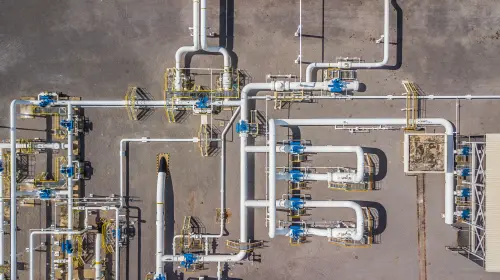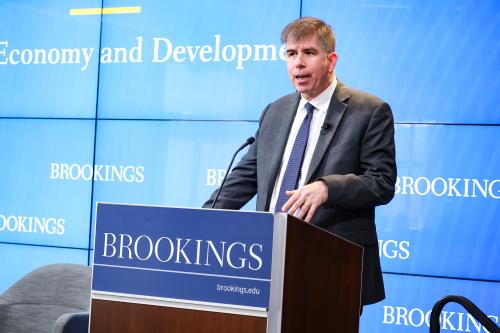The Russian economy has been under trade and financial sanctions since its invasion of Ukraine in February 2022. These were designed to limit its export revenues (such as a price cap on its oil sales and reduced purchases of gas) and curtail its access to global capital markets (such as the freezing of its foreign exchange reserves held, mainly, in Europe). But thanks to high commodity prices, especially during 2022, the Russian economy has run large current account surpluses during this period, allowing it to accumulate substantial foreign assets. Understanding how this has occurred and the size and nature of these assets is important to assess the extent to which Russia can circumvent the financial and trade restrictions imposed by sanctions. This post looks at what we know about such assets. In summary, these assets appear to be mostly in the form of deposits and trade credits, and are held in countries outside advanced economies and the main global financial centers—a shift relative to the initial period after the invasion.1 However, available information is limited because these assets do not appear in the statistics of countries that report liabilities vis-à-vis Russia (for instance, to the Bank for International Settlements), and it is therefore difficult to assess their geographical allocation and liquidity.
Net foreign assets
According to the Central Bank of Russia, the country’s net financial claims on other economies rose from close to $500 billion in 2021 to over $850 billion at the end of 2023.
This is not a measure of Russia’s overall wealth, as it excludes wealth held by Russian residents in Russia. The market value of that measure of wealth very likely declined in dollar terms and real terms, as inflation rose, the ruble depreciated, and market valuations on the Russian stock exchange declined.
Current account surpluses
The main reason for the increase in Russia’s external creditor position during 2022-23 was its large current account surpluses. The surplus in 2022 exceeded $230 billion (10.6% of GDP), buoyed by high prices for its oil and gas exports and by the increased purchases of oil and gas by European countries to bolster stocks ahead of a planned sharp reduction in purchases of Russian gas (by two-thirds in one year). With lower commodity prices and diminished sales of oil and gas to Europe, the current account surplus was much smaller in 2023—about $50 billion. The financial transactions underpinning this cumulative surplus of close to $300 billion over 2022-23 implied a sizable accumulation of net Russian financial claims on the rest of the world. As shown in the figure below, this net asset accumulation had two components:
- A reduction of foreign claims on Russia as many foreign firms left the country (negative FDI in Russia), sold Russian shares and bonds (negative portfolio flows), and reduced other financial claims on Russia, such as loans and trade credits (negative “other investment”);
- An accumulation of financial claims abroad, entirely in the form of other investment assets, such as bank deposits, loans, and trade credits. In contrast, Russia’s portfolio investment abroad (overwhelmingly directed to advanced economies) retrenched, there was no flow of direct investment abroad, and little action on the foreign exchange reserves front, as most of them are frozen.
Valuation changes
Changes in Russia’s external position between the end of 2021 and the end of 2023 reflect this acquisition of net financial claims abroad, but also reflect changes in the value of its pre-existing external assets and liabilities due to fluctuations in exchange rates and asset prices. For instance, the ruble depreciated vis-à-vis the dollar by around 20% over the period, and a Russian stock market index in U.S. dollars lost about a third of its value during the same period.
Overall, valuation changes reduced the size of both Russian assets and liabilities measured in U.S. dollars (see figure below) but had a larger impact on liabilities (many denominated in rubles), and hence contributed to widening Russia’s net creditor position. This effect was boosted by the exit of a number of foreign companies with Russian affiliates (classified as FDI in Russia) who sold these affiliates for prices well below the values incorporated in pre-war estimates of FDI in Russia.
Overall, the increase in Russia’s net creditor position reflects both a reduction in the value of its liabilities and an accumulation of “other investment” assets overseas. In the remainder of this post, we shed some more light on such assets and their likely counterparts, using balance of payments and International Investment Position data published by the Central Bank of Russia, trade data from the IMF Direction of Trade Statistics, and banking data from the Bank of International Settlements and other partner-country data.
Russian asset accumulation: vis-à-vis whom?
The increase in Russia’s other investment assets between the end of 2021 and the end of 2023 is shown in the figure below. Holdings in the largest category—loans, deposits, and currency—were about $350 billion at the end of 2021 and rose by about $60 billion during the following two years. But the largest rise was recorded in “other accounts receivable” (commercial credits), which rose from $60 billion in 2021 to $155 billion at the end of 2023.
To better understand the increase in loans and deposits, we turn to data from the Bank of International Settlements on counterparty countries’ liabilities to Russian entities. The data separates claims of the Russian central bank which are classified as foreign exchange reserves and hence not included in other investment assets. Those claims have accumulated as a result of maturing securities and accrued interest in frozen Russian reserves, as documented in a recent Hutchins Center explainer. The data distinguishes the rest of Russian claims into those on countries that disclose their bilateral position vis-à-vis Russia (all major advanced economies as well as several emerging markets—orange) and those that do not (including, for instance, China and India—gray).
Overall, the data show that Russian holdings in BIS-reporting banks (excluding those of the central bank) have actually fallen (see the discussion in the BIS Statistical Release of June 2022 data for early evidence on this issue). The decline is due to a compression of claims on the main advanced economies, while the (more modest) holdings in other countries reporting to the BIS have increased since the Russian invasion of Ukraine. Currency composition data on Russian claims shows an increase in claims denominated in “non-core currencies” (currencies other than the U.S. dollar, the euro, the pound, the Swiss franc, and the yen) which broadly matches the increased holdings in “other countries.” While this evidence suggests a shift in Russian claims away from the main financial centers towards other economies, it cannot explain quantitatively the increase in Russian loans and deposits. But the shift away from claims on advanced economies pre-dates the start of the war: In 2021, holdings in BIS-reporting banks accounted for around 30% of Russian banks’ loans and deposits abroad and only around a quarter of the loans and deposits abroad of all Russian entities.
We turn now to the accumulation of commercial credits (“other account receivables” in the balance of payments). These are typically short-term claims of exporters on the buyers of their products. It is useful to consider Russia’s bilateral trade pattern during this period. The overall size of Russia’s trade surplus has been primarily driven by commodity prices, with the very large surplus in 2022 reflecting high oil and natural gas prices. Data from the International Monetary Fund’s Direction of Trade Statistics shows a big shift in other countries’ bilateral trade balances in goods vis-à-vis Russia during 2022 and 2023. Specifically, the large surplus vis-à-vis advanced economies in 2021-22 basically disappeared by 2023, as these countries curtailed their purchases of Russian energy (below figure).2 In contrast, the surplus vis-à-vis emerging and developing economies remained very large in 2023, in particular vis-à-vis emerging Asia (especially India), emerging Europe (especially Turkey), and central Asia (especially Kazakhstan). This suggests that the accumulation of commercial credits may be vis-à-vis countries that are less central to the global financial system.
In conclusion, Russia has accumulated substantial external assets since its invasion of Ukraine, in the form of commercial credits as well as loans and bank deposits. However, it is difficult to establish where these assets are held as well as their nature. Claims vis-à-vis the main advanced economies have been scaled back—excluding the frozen foreign exchange reserves. The evidence suggests that Russia has accumulated increased claims on emerging economies, with an increased share of claims denominated in currencies other than those of the main advanced economies. These claims are likely to be less liquid than deposits in the main international banks (absent sanctions), but a more comprehensive assessment is difficult, since data on the relative size and location of such claims remains elusive.
-
Acknowledgements and disclosures
The authors are grateful to Goetz von Peter and Swapan-Kumar Pradhan for sharing BIS data and providing useful clarifications, and to Emidio Cocozza, Flavia Corneli, Valerio Dellacorte, Elina Ribakova, Michele Savini Zangrandi, and David Wessel for useful discussions and suggestions.
The Brookings Institution is financed through the support of a diverse array of foundations, corporations, governments, individuals, as well as an endowment. A list of donors can be found in our annual reports published online here. The findings, interpretations, and conclusions in this report are solely those of its author(s) and are not influenced by any donation. -
Footnotes
- A related piece by Bank of Italy economists takes stock of what was known on the location of Russian foreign assets in late 2022, highlighting how the initial accumulation of external assets occurred to a notable extent in sanctioning jurisdictions. See also the discussion of “shadow reserves” in Hilgenstock, Ribakova, and Wolff.
- The overall trade deficit of advanced economies vis-à-vis Russia is smaller because of a surplus in trade in services.



Commentary
Where have the current account surpluses gone? Russia’s accumulation of foreign assets since the invasion of Ukraine
April 19, 2024